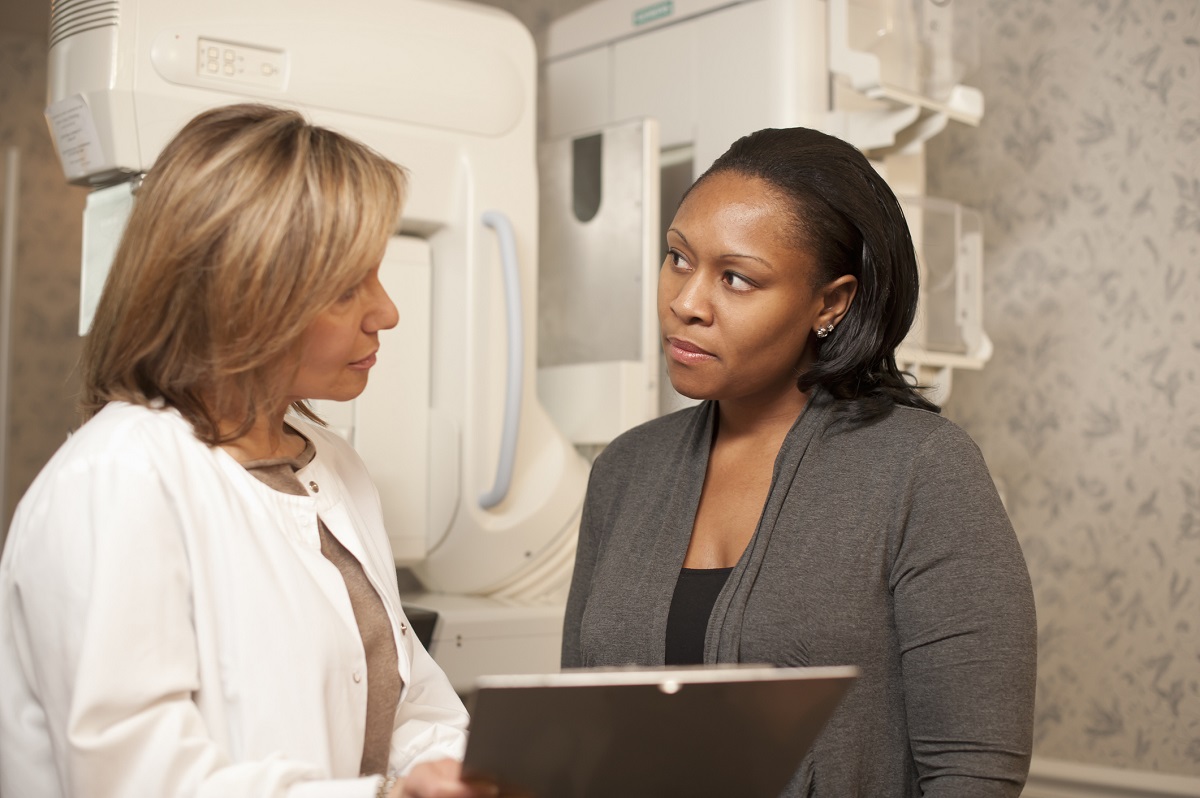The Medical Minute: Could that breast pain be cancer? When to get a mammogram

If you’ve ever felt pain, tenderness and tightness – maybe even a sharp, stabbing sensation – in your breasts, it’s hard not to jump to conclusions.
Could it be the C word?
Rarely, experts say.
“We see a lot of patients who come looking for answers that have widespread, cyclical breast pain,” said Dr. Alison Chetlen, chief of breast imaging in the Department of Radiology at Penn State Health Milton S. Hershey Medical Center. In those situations, what the patients usually need more than imaging is comfort. “We usually start with reassurance, perhaps eliminating the underlying cause of the pain. Sometimes it is related to their menstrual cycle or underlying hormonal fluctuations. Is it musculoskeletal? If so, perhaps medication and a warm compress will help. Something like arthritis of the rib joints also can cause pain that mimics breast pain. In such cases, the pain is not actually coming from the breasts.”
Anyone can experience breast pain
Women, men and transgender people experience breast pain for many reasons.
“It’s extremely rare for breast cancer to be the source of breast pain,” Chetlen said. “We worry more when we have a patient present with a lump, bloody nipple discharge or a lump under the armpit. Breast pain is typically not the initial sign of breast cancer.”
Men may experience breast pain throughout all stages of life. Often it is due to a condition called gynecomastia, an increase in the amount of breast glandular tissue caused by a hormone imbalance.
“Even as boys change into men they can experience pain behind the nipple, which can be quite painful,” Chetlen said. “Ninety-nine times out of 100, it is gynecomastia, which is benign.”
For transgender women, the cause may be hormone therapy, while transgender men may experience breast pain due to native breast tissue or if they’ve had a breast reduction or mastectomy, breast tissue that is left behind.
When to call the doctor
In every situation, if you experience breast pain that worsens over time, is localized to one area, interferes with daily activities or includes a lump, redness or warmth, you should see a physician immediately to discuss your symptoms.
“Usually the referring physician will request a diagnostic workup,” Chetlen said. “The diagnostic evaluation isn’t black and white. We listen to the patient’s story and tailor the diagnostic workup to the patient and their specific symptoms.”
Be your own advocate
Patients who perform regular breast self-exams will be in a better position to help their physician determine the source of their pain, according to Chetlen.
“Regular breast self-exams are part of understanding and being in touch with your body, so if there are any changes, you’ll be the first to know,” she said. “We’ve had some patients sent by their providers with a breast concern, and the patient admits they themselves have never felt or looked at their breast. That makes determining the cause of their symptom more challenging because they aren’t as in touch with their bodies as others. It is important to get to know your body, listen to your body and be an advocate for yourself.”
Related content:
- The Medical Minute: What happens at a 3-D mammogram
- The Medical Minute: Breast density — separating myth from fact
The Medical Minute is a weekly health news feature produced by Penn State Health. Articles feature the expertise of faculty, physicians and staff, and are designed to offer timely, relevant health information of interest to a broad audience.
If you're having trouble accessing this content, or would like it in another format, please email Penn State Health Marketing & Communications.
